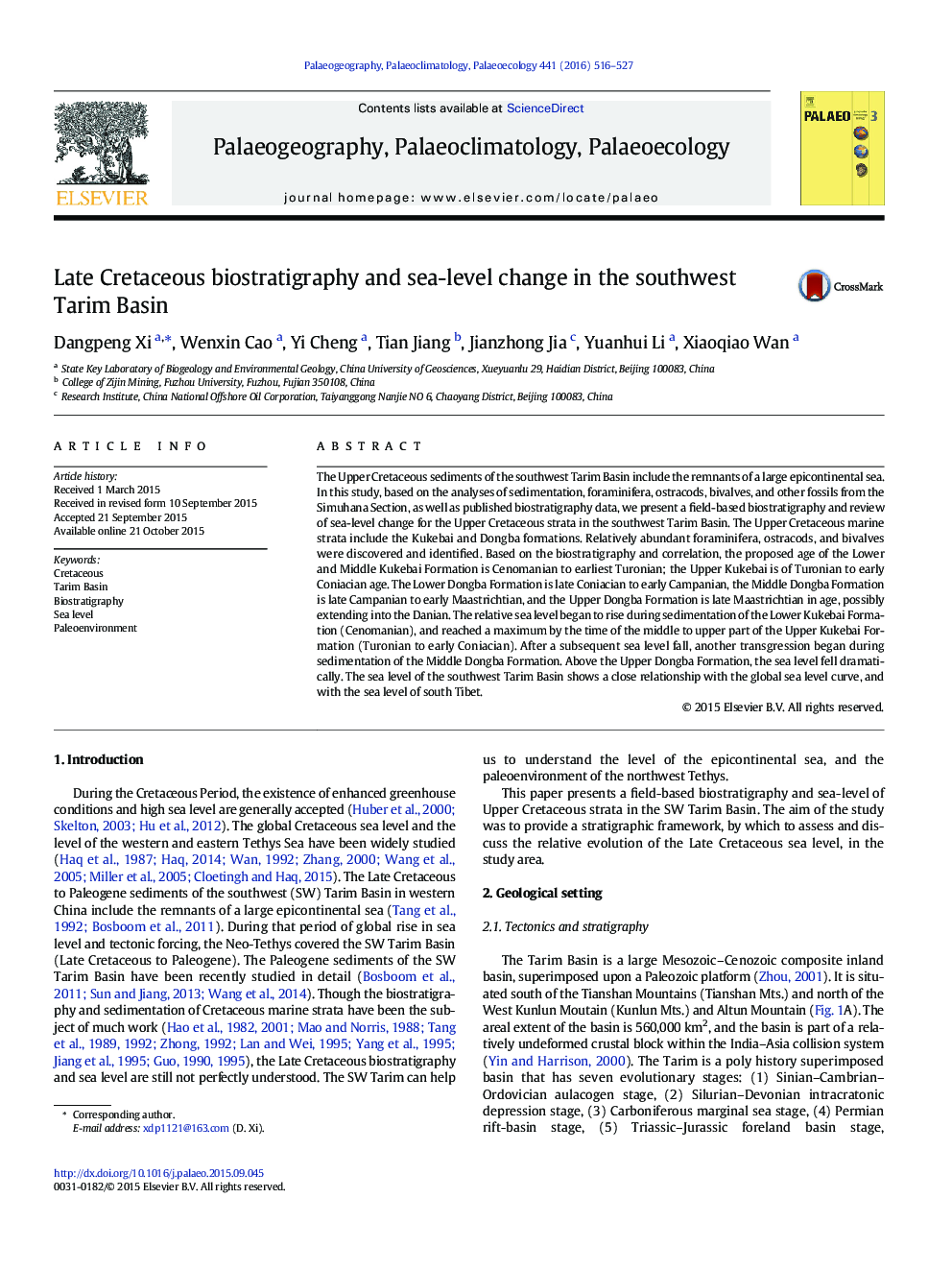| Article ID | Journal | Published Year | Pages | File Type |
|---|---|---|---|---|
| 6349469 | Palaeogeography, Palaeoclimatology, Palaeoecology | 2016 | 12 Pages |
Abstract
The Upper Cretaceous sediments of the southwest Tarim Basin include the remnants of a large epicontinental sea. In this study, based on the analyses of sedimentation, foraminifera, ostracods, bivalves, and other fossils from the Simuhana Section, as well as published biostratigraphy data, we present a field-based biostratigraphy and review of sea-level change for the Upper Cretaceous strata in the southwest Tarim Basin. The Upper Cretaceous marine strata include the Kukebai and Dongba formations. Relatively abundant foraminifera, ostracods, and bivalves were discovered and identified. Based on the biostratigraphy and correlation, the proposed age of the Lower and Middle Kukebai Formation is Cenomanian to earliest Turonian; the Upper Kukebai is of Turonian to early Coniacian age. The Lower Dongba Formation is late Coniacian to early Campanian, the Middle Dongba Formation is late Campanian to early Maastrichtian, and the Upper Dongba Formation is late Maastrichtian in age, possibly extending into the Danian. The relative sea level began to rise during sedimentation of the Lower Kukebai Formation (Cenomanian), and reached a maximum by the time of the middle to upper part of the Upper Kukebai Formation (Turonian to early Coniacian). After a subsequent sea level fall, another transgression began during sedimentation of the Middle Dongba Formation. Above the Upper Dongba Formation, the sea level fell dramatically. The sea level of the southwest Tarim Basin shows a close relationship with the global sea level curve, and with the sea level of south Tibet.
Related Topics
Physical Sciences and Engineering
Earth and Planetary Sciences
Earth-Surface Processes
Authors
Dangpeng Xi, Wenxin Cao, Yi Cheng, Tian Jiang, Jianzhong Jia, Yuanhui Li, Xiaoqiao Wan,
